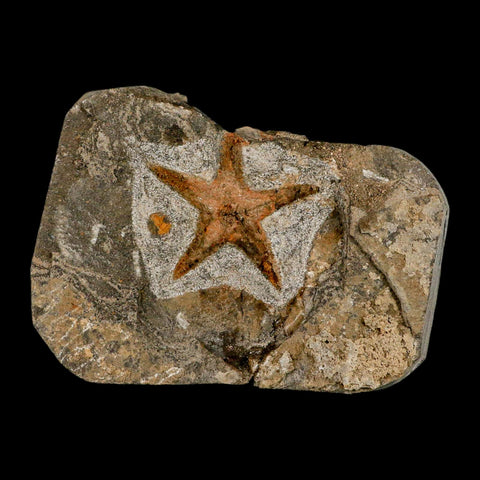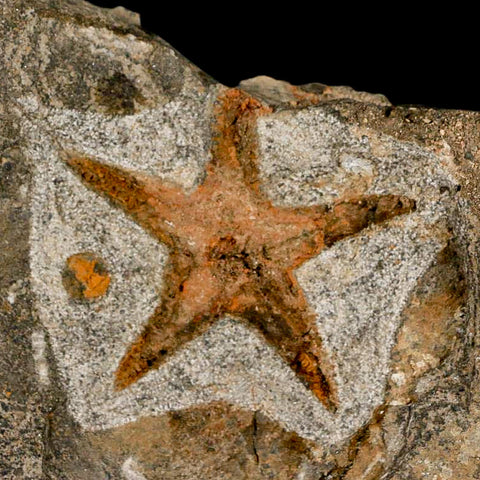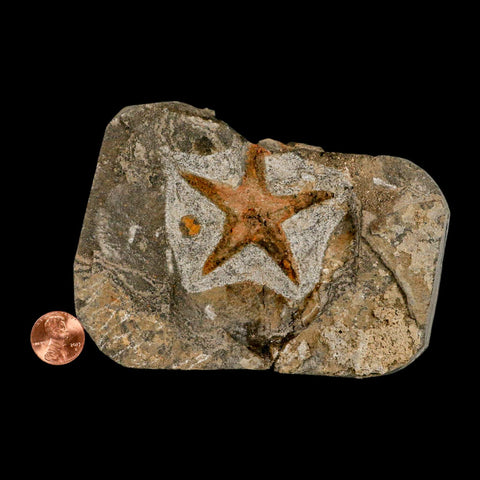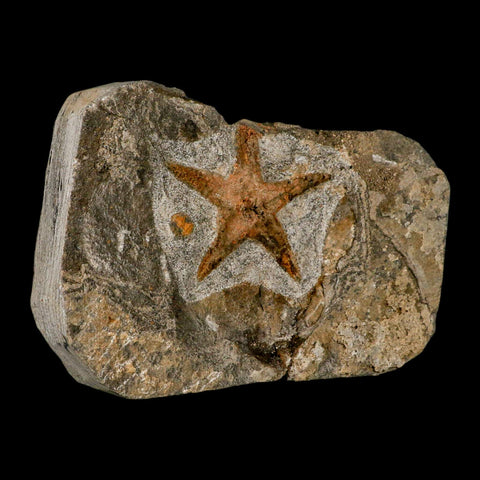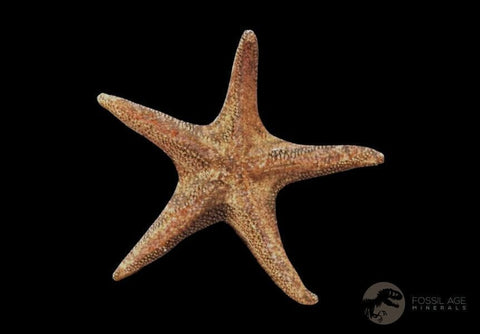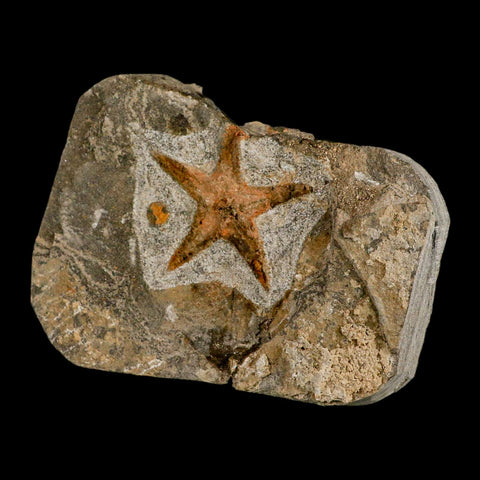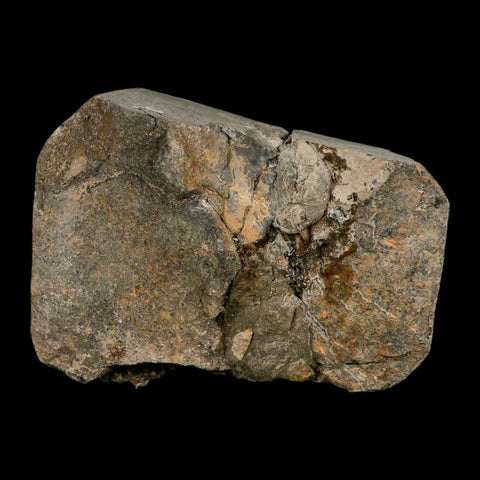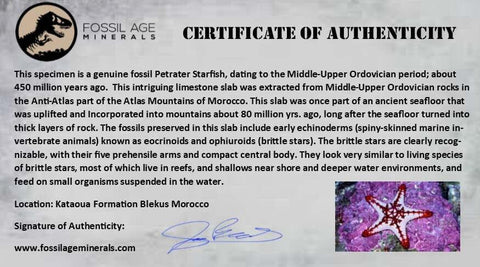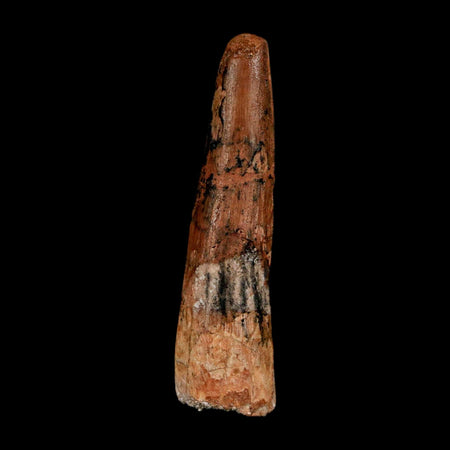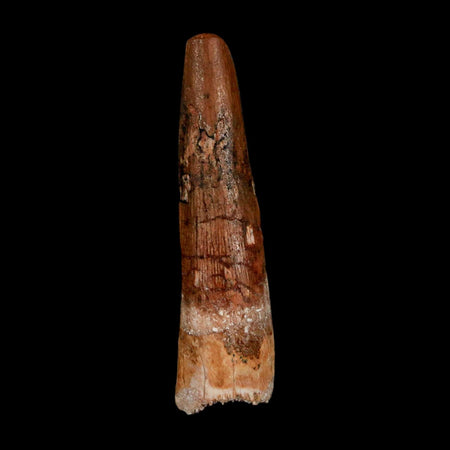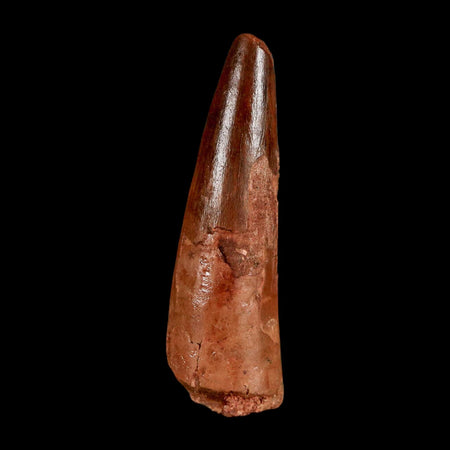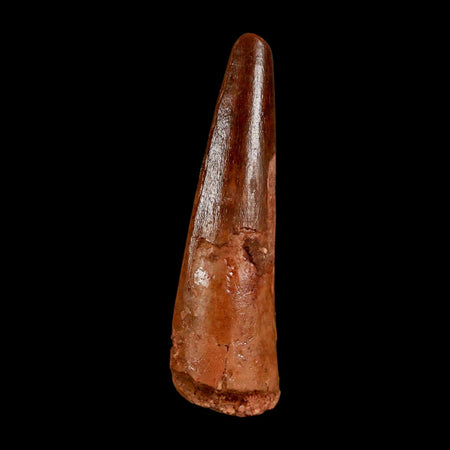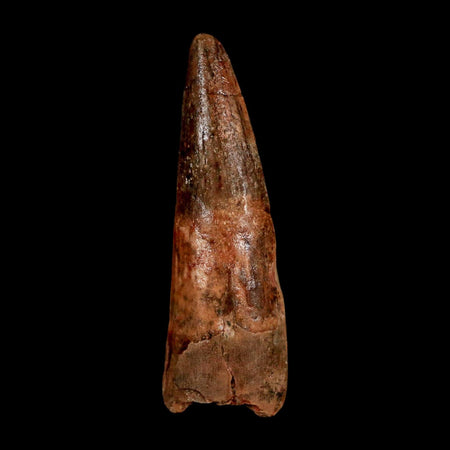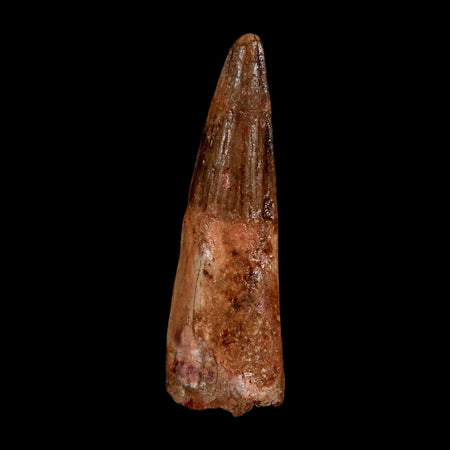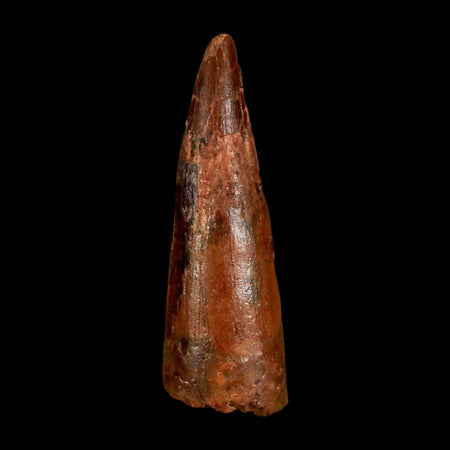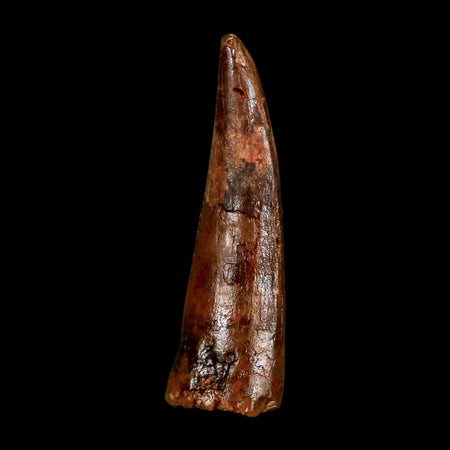57MM Brittle Star Petraster Starfish Fossil Ordovician Age Blekus Morocco COA
Location: Kataoua Formation, Blekus, Morocco
Weight: 14.2 Ounces
Starfish Dimensions: 57MM
Dimension: 4.9 Inches Long, 3.6 Inches Wide, 1.2 Inches Thick (Plate)
Comes with a Certificate of Authenticity.
The item pictured is the one you will receive.
Brittlestar Petraster
This intriguing limestone slab was extracted from Middle-Upper Ordovician (about 450 million years old) rocks in the Anti-Atlas part of the Atlas Mountains of Morocco. This slab was once part of an ancient seafloor that was uplifted and incorporated into mountains about 80 million years ago, long after the seafloor turned into thick layers of rock.
Contained within this slab are fossils of early echinoderms, including the spiny-skinned echinoids and agile ophiuroids, or brittle stars. The brittle stars stand out with their five gripping arms and tight, central body. Their form boldly mirrors that of modern brittle stars, thriving in reefs, coastal shallows, and deep waters, hunting small suspended organisms with striking efficiency.
Eocrinoids are quite distinctive, characterized by their long, slender, tapering stems and clusters of arm-like structures at one end. These creatures are likely Eocrinoid Ascocystites, which feed by filtering microorganisms directly from the water using their appendages. Although their name might suggest a link to crinoids (sea lilies), eocrinoids are actually different in multiple physical aspects from both ancient and modern crinoids. Yet, like many fossil crinoids, their extended stems helped them attach to hard surfaces and elevate themselves above the seafloor.
There appear to be several larger individuals along with several much smaller ones. Those smaller animals may be juveniles of the larger form or a different species. Do you notice how the smaller individuals often seem to be in close contact with the brittle stars? We are often led to wonder whether the brittle stars were feeding on the smaller echinoids.

Please be aware of the nature of fossils:
Being buried under the ground for millions of years under tons of pressure tends to be rough. No fossil comes out of the ground whole and perfect. Most fossils have undergone some restoration, while others are altered by man simply to enhance their presentation in different ways. The workers in Morocco do a very professional job of unearthing and preserving these natural treasures. These are part of the natural beauty of the fossil and are not considered defects.


